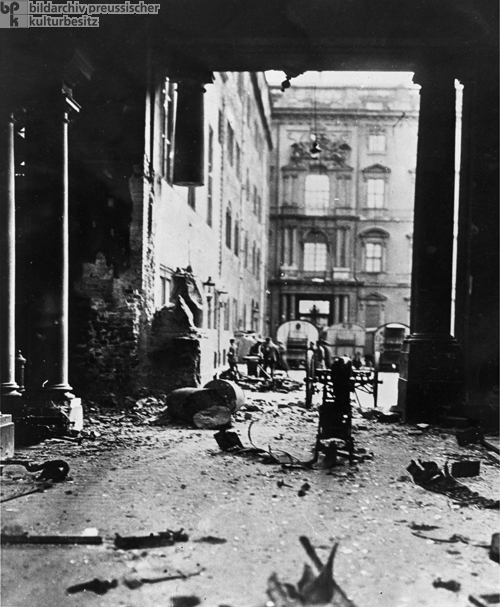













INTRODUCTION | DOCUMENTS | IMAGES | MAPS | EDITOR
|
In December 1918, the confrontation between the People’s Naval Division and the Committee of People’s Representatives took a violent turn in the so-called Christmas Rebellion. Fighting occurred in the governmental quarter of Berlin, devastating the Berlin Palace. The soldiers there had refused to leave because they had not yet been paid, whereas the People’s Representatives had accused the soldiers of stealing works of art from the palace. This photograph shows the condition of the inner courtyard after the fighting. The Reichswehr was forced to pull back, and the palace was finally cleared, but the People’s Naval Division continued to exist undiminished in size.
© Bildarchiv Preußischer Kulturbesitz |
 print version
print version return to image list
return to image list previous image
previous image
